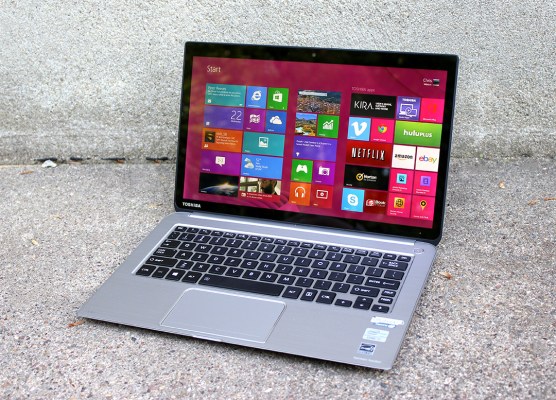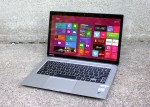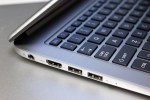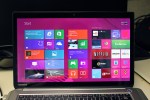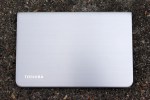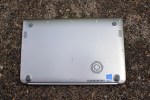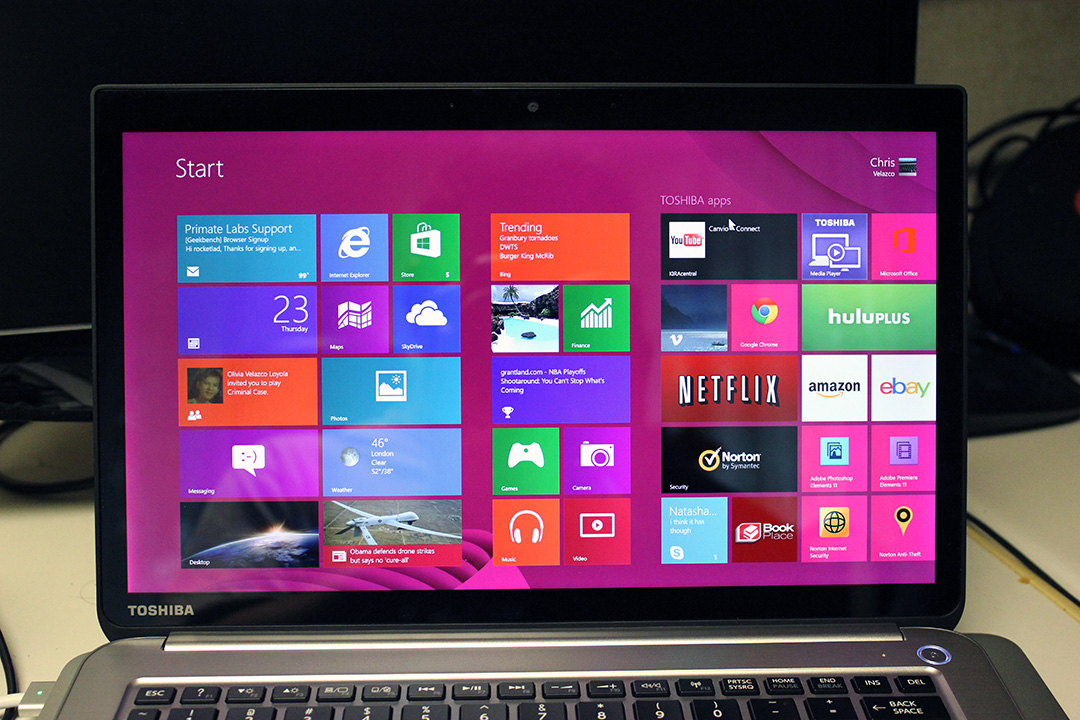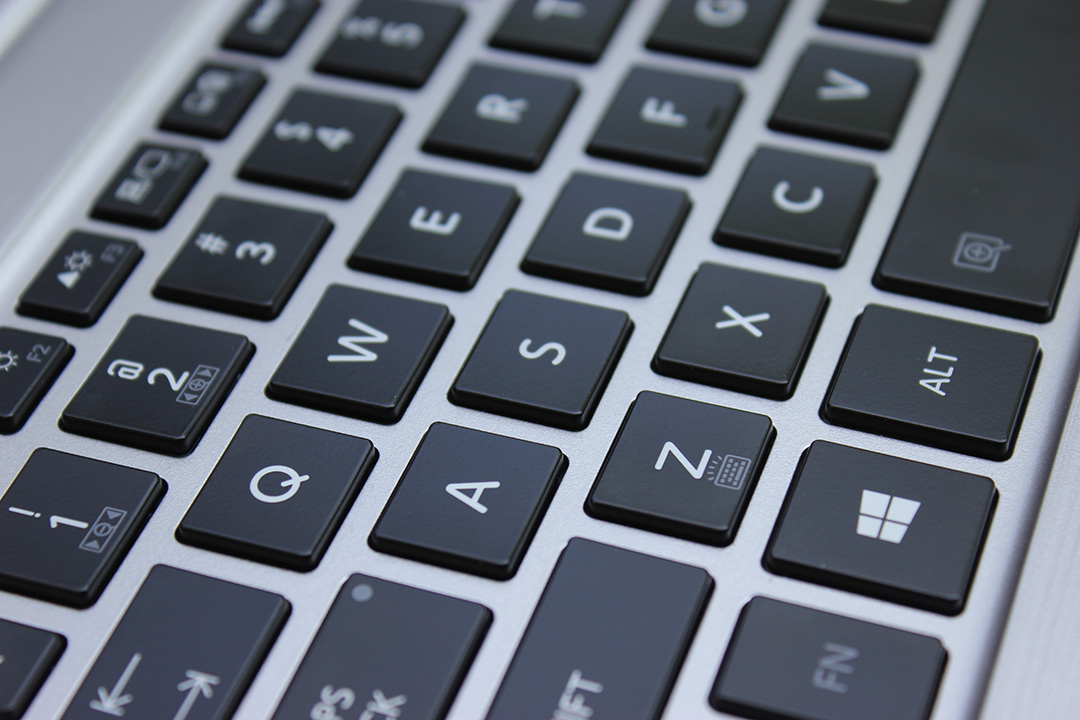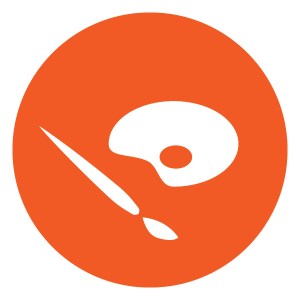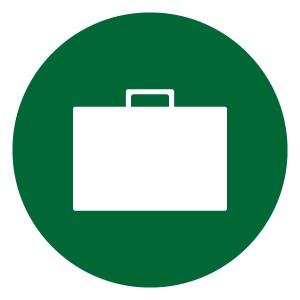Features:
- Ships with Windows 8 64-bit
- 13.3-inch display running at 2560 x 1440 (221ppi)
- 256GB SSD
- 2GHz Intel Core i7-3537U Processor
- 8GB of RAM
- MSRP: Starts at $1,599, model reviewed costs $1,999
Pros:
- An incredibly high-res display for a Windows laptop
- 2 years of free premium support
- Respectable battery life
Cons:
- No discrete graphics card
- Man, this thing is expensive
Eye Candy Meets Horsepower
Toshiba isn’t exactly known for churning out attractive, high-end notebooks, which is why the company’s new Kirabook is such an oddity. It’s a handsome little thing if you’re into very (and I mean very) understated designs, though I imagine at least a few people will think the Kirabook looks downright dull.
The Kirabook is wedge-shaped like many of its other ultrabook brethren but it’s thankfully very light on branding (save for a small, chrome-esque Toshiba logo slapped on a corner of the Kirabook’s lid), and a finish that comes as a result of the magnesium alloy chassis is nice enough. Sadly, that magnesium frame doesn’t mean the Kirabook is immune to scratches, something I quickly learned after stowing the thing in a checked bag while flying to Austin.
It’s got a respectable spate of ports for an ultraportable too: AC power aside, there are a total of three USB 3.0 ports plus an HDMI out, a headphone jack, and a full-size SD card reader.
If anything, the real eye-catcher here is that sumptuous screen. The Kirabook plays home to a 13.3-inch display running at 2,560 x 1,440 (that makes for a pixel density of 221ppi), and Toshiba likes to crow about it being the highest resolution display available on a Windows notebook. Credit where credit is due, that display is one of the Kirabook’s most notable high points: colors are generally vivid and bright, and the panel seems hardy enough to handle even the most frenzied touch inputs. That’s not to say it’s without its shortcomings though. There’s a bit of light leakage around the edge of the display panel and viewing angles aren’t the greatest — looking at the thing dead-on is pleasant enough, but there’s a bit of color distortion to be seen once you start moving around.
But there’s one big problem when it comes to the display, and it has nothing to do with the panel itself. I won’t belabor the point too much — by now you’ve probably already made up your mind about Microsoft’s divisive OS — but the biggest disappointment is that Windows 8 and the apps that run on it just aren’t completely tuned for these HiDPI screens yet. Cruising through the touch-friendly start screen is a visual pleasure, as is firing up apps like Internet Explorer, Maps, Vimeo, and Netflix since they all thrive on these sorts of displays. Jumping into the desktop is another world entirely, and it’s full of applications and menus that appear blurry and ill-suited for such a neat display. What a bummer.
When it comes to performance, the Kirabook manages to hold its own very nicely. We like running Geekbench around these parts, and on average the Kirabook scored between 7500 and 8000 when it came to running 64-bit benchmarks: very solid numbers, and there wasn’t anything that came up during my day-to-day use that managed to flummox the little guy. That is, except for gaming — the lack of a discrete GPU in a $2000 machine is concerning, and the integrated Intel HD 4000 plus the need to push a crazy number of pixels means that there will be very little Bioshock Infinite running on the Kirabook unless you dramatically crank down the quality.
Speaking of day-to-day use, the Kirabook has more than enough juice to get you through the day. I’ve been toting the 2.9 pound notebook around for the better part of a week, and I’ve consistently been able to camp out in coffee shops and keep the Kirabook going for just over six hours.
There’s little question that the Kirabook is actually a pretty speedy little bugger, but there is a caveat. The downside to all that power is that the tiny fan nestled on the Kirabook’s bum will fire up after even slight provocation, and it’s just loud enough to be grating if you decide to do anything processor-intensive for a while. If you work in environments with plenty of ambient noise it may not be much of a problem, but be warned — those of you who like to work in quiet, zen-like tranquility will probably get pretty miffed.
I haven’t fiddled with many of Toshiba’s older laptop keyboards, but the consensus seems to be that they were largely rubbish. Keyboard snobs may just turn up their noses after a few moments with the Kirabook’s 6 row affair, but despite the fact that the keys feel a bit small I found that using it to peck out posts and emails wasn’t too bad at all after a break-in period. Sad to say, the trackpad was a completely different story.
See, the trackpad occasionally seems to forget what it’s capable of — I can’t tell you how many times I’ve been able to two-finger scroll in Chrome using the trackpad before the Kirabook suddenly stops accepting multi-finger inputs. This may not seem like a big deal to some of you (especially since the Kirabook sports a highly responsive, glass-covered touchscreen) but it’s tremendously frustrating to discover what worked 5 seconds ago doesn’t work any more for no apparent reason.
The elephant in the room here is the price tag that’s attached to this highly portable package — the configuration I’ve been spending time with will set you back a cool $1,999. Toshiba has tried to temper the sticker shock by loading the Kirabook up with full versions of Photoshop Elements and Norton Internet Security (ugh), not to mention two years worth of premium support from a dedicated team of Kirabook specialists all within the United States, but the price differential will probably be enough to make some would-be ultrabook purchasers balk.
Who is it for?
Designers
No. If you’re an artist looking to get some work done, I suspect the blurry, pixelated text and images that result from mixing a hi-res screen and applications that aren’t really ready for it may be enough to get you running for the hills.
On the plus side, Photoshop makes full use of what limited screen real estate the Kirabook affords you and it’s easy enough to get into the swing of things… if you’re willing to squint, that is. Hooking the Kirabook up to an external monitor helps quite a bit, but the sketchy trackpad means you’ll definitely need other peripherals to chip in too.
Founders
No. If you’re a founder looking for a smart way to spend your newly-raised seed funds, you’d probably do well to stay away from the Kirabook. That’s not to say it’s a bad computer, but the crucial bang-for-the-buck factor is notably absent here. The most basic touchscreen-laden Kirabook retails for $1,699, or $100 more than an a higher-end 13-inch Retina MacBook Pro. That’s not an insignificant premium to pay when the Kirabook is marred by a few prominent issues. And sure, you can pick out a slightly less expensive version that eschews the touchscreen, but then there’s really no point in Kirabook in the first place.
Programmers
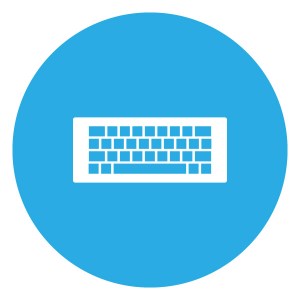
Maybe? 13.3 inches may seem a little cramped for coding, but that multitude of pixels means that you’ve got plenty of real estate for crafting apps and tapping into APIs. Arguably the price tag is still too steep if all you’re looking for is a machine to run Visual Studio, Android Studio, or good ol’ Notepad++, but there’s nothing here that would immediately disqualify the Kirabook from being a coder’s companion.
Bottom Line
You know, for all of the little things Toshiba either got wrong or didn’t execute that well, I still actually really like the Kirabook. The company took a shot on something different, and even though this first iteration isn’t exactly a home run, it has made me rethink the prospect of spending my own money on a Toshiba computer.
Once the Kirabook drops in price (which shouldn’t take long since Intel’s new Haswell chips are barreling down the pipeline), Toshiba’s nifty premium ultrabook may find the success it deserves. For now though, it’s just too pricey and too unpolished for anyone but the biggest Toshiba die-hards to splurge on — here’s hoping that Toshiba manages to firm up the formula when it comes time to whip up the Kirabook 2.
